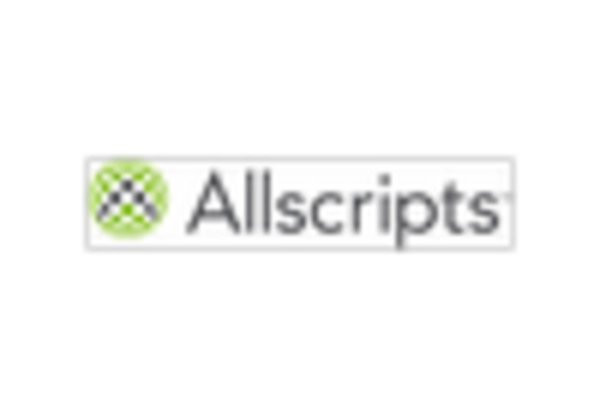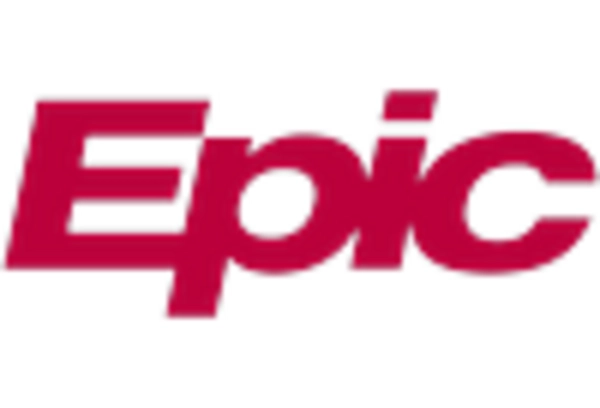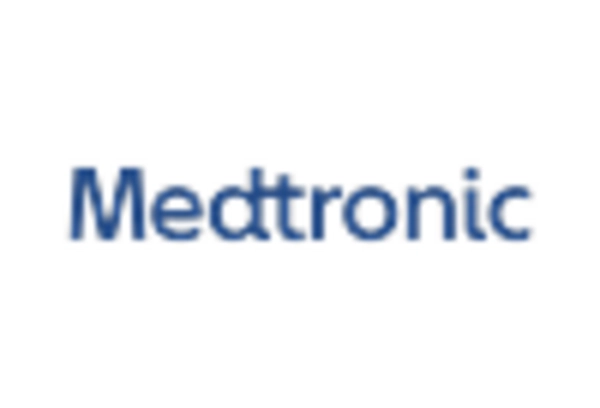Growing Awareness of Mental Health
The medically prescribed-apps market is also influenced by the rising awareness of mental health issues among the population. As societal stigma surrounding mental health diminishes, more individuals are seeking support through digital platforms. Apps designed for mental health management, including therapy and mindfulness tools, are becoming increasingly popular. Recent surveys indicate that nearly 40% of adults in the US have reported experiencing mental health challenges, highlighting the urgent need for accessible solutions. This growing awareness is likely to drive demand for medically prescribed apps that cater to mental health needs, thereby expanding the market. As healthcare providers recognize the importance of addressing mental health, the integration of these apps into treatment plans is expected to become more common, further propelling market growth.
Expansion of Reimbursement Policies
The medically prescribed-apps market is witnessing a transformation due to the expansion of reimbursement policies for digital health solutions. As insurers increasingly recognize the value of these apps in improving patient outcomes and reducing costs, more reimbursement options are becoming available. Recent legislative changes have led to a more favorable environment for the reimbursement of medically prescribed apps, which could potentially increase their adoption among healthcare providers. This shift is expected to enhance the financial viability of these apps, making them more accessible to patients. As reimbursement policies continue to evolve, the medically prescribed-apps market is likely to experience accelerated growth, as both patients and providers are incentivized to utilize these innovative solutions.
Increased Focus on Preventive Healthcare
The medically prescribed-apps market is benefiting from a growing emphasis on preventive healthcare. As healthcare costs continue to rise, both patients and providers are recognizing the value of preventive measures in reducing long-term health expenditures. Apps that facilitate early detection of health issues and promote healthy lifestyle choices are gaining traction. Data suggests that preventive healthcare can reduce overall healthcare costs by up to 30%. This shift towards prevention is likely to encourage the adoption of medically prescribed apps that assist in monitoring health indicators and providing actionable insights. Consequently, the market is poised for growth as more healthcare systems integrate these tools into their preventive care strategies, enhancing patient outcomes and reducing the burden on healthcare resources.
Rising Demand for Personalized Healthcare
The medically prescribed-apps market is experiencing a notable surge in demand for personalized healthcare solutions. Patients increasingly seek tailored treatment plans that align with their unique health profiles. This trend is driven by advancements in technology, enabling the development of apps that can analyze individual health data and provide customized recommendations. According to recent data, approximately 70% of patients express a preference for personalized treatment options. This shift towards individualized care is likely to enhance patient engagement and adherence to treatment regimens, thereby fostering growth in the medically prescribed-apps market. As healthcare providers recognize the importance of personalized approaches, the integration of these apps into standard care practices is expected to become more prevalent, further propelling market expansion.
Technological Advancements in Mobile Health
Technological innovations are significantly influencing the medically prescribed-apps market. The proliferation of smartphones and wearable devices has facilitated the development of sophisticated health applications that monitor various health metrics in real-time. For instance, the integration of artificial intelligence and machine learning algorithms allows for more accurate health assessments and predictive analytics. Recent statistics indicate that the mobile health app market is projected to reach $100 billion by 2025, underscoring the potential for growth in the medically prescribed-apps market. These advancements not only improve patient outcomes but also streamline healthcare delivery, making it more efficient and accessible. As technology continues to evolve, the demand for apps that leverage these innovations is expected to rise, further driving market dynamics.

















Leave a Comment